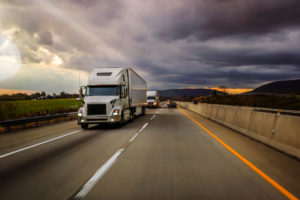By Clifford Winston, Barron’s
Congestion and delays at ports and on highways are raising fears of a disrupted holiday shopping season. It may be too late to rescue this year’s Christmas stockings, but there is a way to reduce congestion delays significantly and prevent future breakdowns of the supply chain. Policymakers should see the supply-chain crisis as a reason to prioritize autonomous transportation across the economy.
Congestion delays begin to accumulate when raw materials and finished goods arrive by ship a port and wait to be unloaded. Container vessels were recently waiting seven to 12 days at the key U.S. ports in Los Angeles and Long Beach, and up to six days in Rotterdam. Shipping cargo by truck to industrial warehouses increases delays because the shortage of truck drivers prevents cargo from being loaded quickly onto trucks and because congested highways, especially in urban areas, slow deliveries. Additional delays occur because congestion slows trucks that deliver finished goods to stores, and vans that deliver products to consumers. Congestion that increases the operating costs of ships and trucks is borne by consumers in higher product prices.
Autonomous transportation modes can reduce labor-related and congestion delays that disrupt the supply chain. Autonomous ships operate smoothly in crowded shipping lanes and close to shore. Autonomous cranes and straddle carriers that load and unload containers reduce maritime accidents and a vessel’s berthing and unberthing time at a port. Autonomous ships can operate 24/7 at all ports because they require far less labor on land to assist with their operations.
The first autonomous container ship, the Yara Birkeland, is scheduled to be tested on a journey between two Norwegian ports at the end of the year. Policymakers can help expedite the adoption of autonomous ships by setting congestion charges at ports to reduce traffic at peak times. The revenues can fund infrastructure improvements that will enable ships to engage safely in autonomous operations by communicating in real time with each other and port coordination facilities to avoid collisions.
As I discuss in my co-authored book, Autonomous Vehicles: The Road to Economic Growth?, autonomous vehicles represent a watershed moment in the development of surface transportation. They can significantly improve travel speed and reliability, and virtually eliminate highway fatalities and injuries, by creating a much smoother traffic flow where vehicles travel together at higher speeds and travelers do not cause accidents. Vehicle makers, tech companies, and research universities have been working to perfect the technology for many years.
Autonomous trucking companies, including TuSimple, PlusAI, Embark Trucks, Waymo Via, and Aurora Innovation, are attracting funds and testing their vehicles on highways to meet the challenges of responding safely to real-world driving conditions. Their operations would improve supply-chain efficiency by increasing the speed and reliability of deliveries and by mitigating the shortage of truck drivers, which contributes to delays at ports and throughout the supply chain. But trucks share the road with cars, which create the bulk of congestion. It’s essential for cars to be automated, too, so that the public can realize the full benefits of automated transportation.
Governments will play a critical role in the adoption of autonomous cars and trucks by upgrading the highway infrastructure to develop a fully optimized system, where AVs are connected to other vehicles and their surroundings, including pedestrians, infrastructure, and the road network. Devices to facilitate vehicle-to-infrastructure communication, for example, may be put on lampposts. Fiber-optic lines will be put in roads to send electronic warnings to AVs if hazards are ahead, as well as other information to keep them aware of their surroundings.
As in the case of autonomous ships, policymakers can help expedite adoption of autonomous vehicles by setting highway congestion charges, which can fund the essential infrastructure improvements. Indeed, cities throughout the world, including London, Stockholm, and Singapore, are gradually adopting congestion pricing. Recently, New York City’s legislators approved a congestion pricing plan for motorists driving into Manhattan south of 60th Street. However, London, for example, broadly allocates congestion toll revenues to its entire transport system. New York City plans to earmark some $15 billion in toll revenues for public transit.
Instead, all cities should take a long-run perspective and use a large share of the congestion toll revenues to prepare their roads for autonomous vehicles and secure a better transportation future with far less likelihood of supply chain disruptions. Efforts by some ports to reduce delays by operating 24/7 have not produced meaningful improvements to date. Highway delays are expected to grow as more economic activity returns from the pandemic.
The public is now more aware that transportation delays at any part of the supply chain can adversely affect an entire economy. That means policymakers can justify allocating revenues from congestion pricing to fund the infrastructure to facilitate autonomous transportation. Those are the investments we need to ensure Christmas stockings are filled with goods, not backorder slips.

